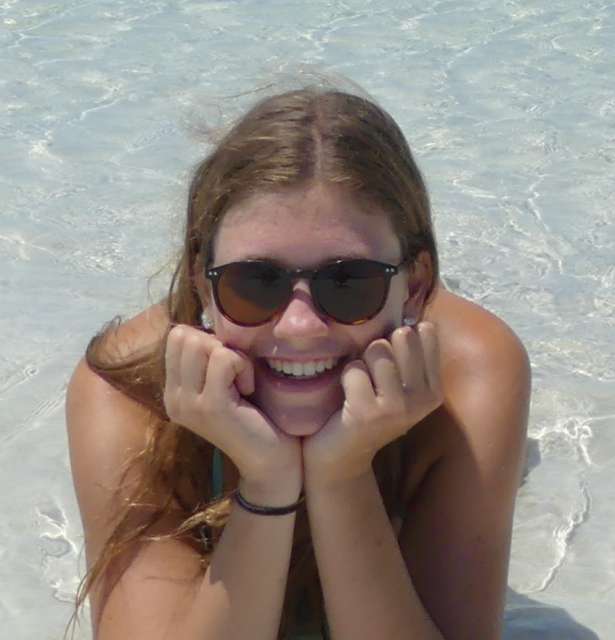
silvisabenteuer
vakantio.de/silvisabenteuer
Canberra Sightseeing Day 1
Wɔatintim: 04.03.2017
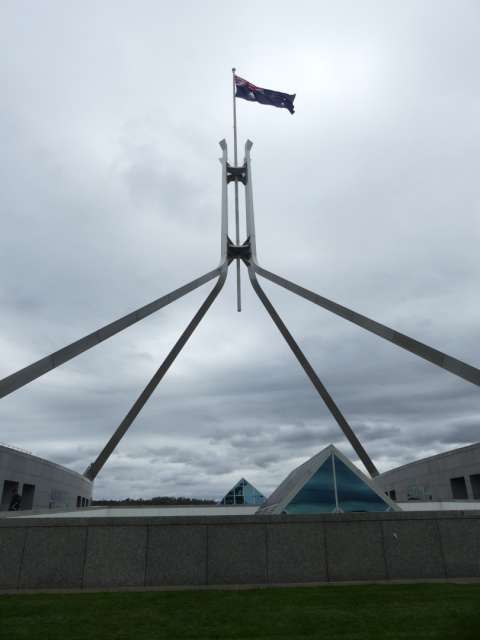
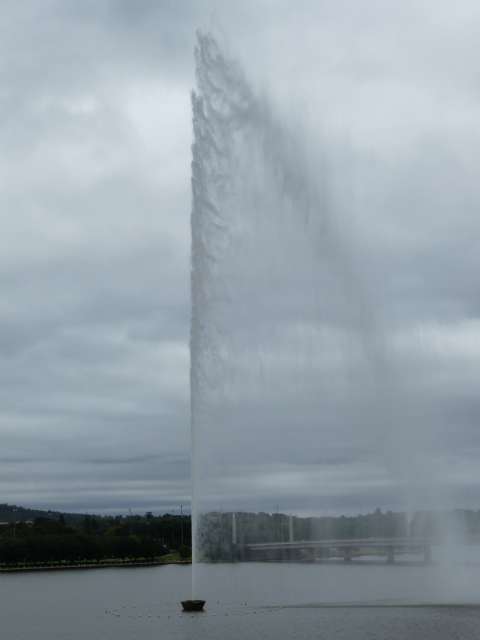
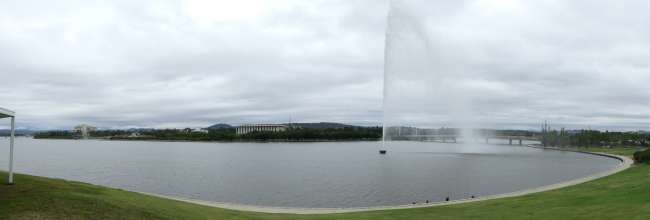
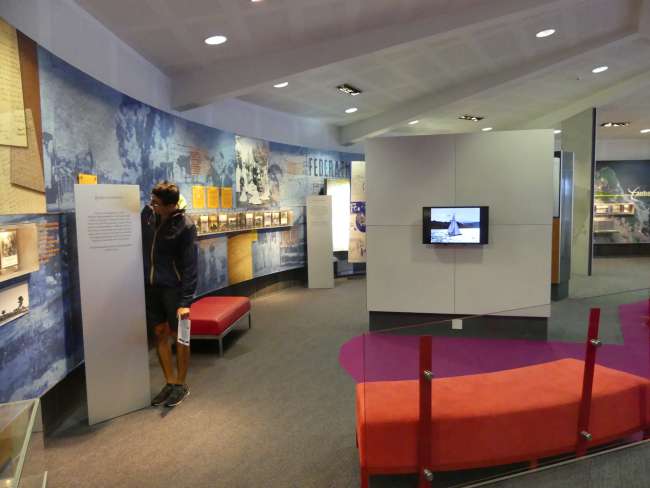
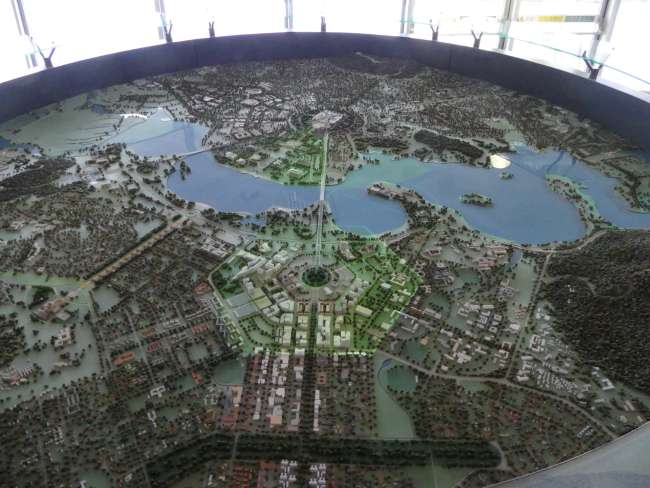
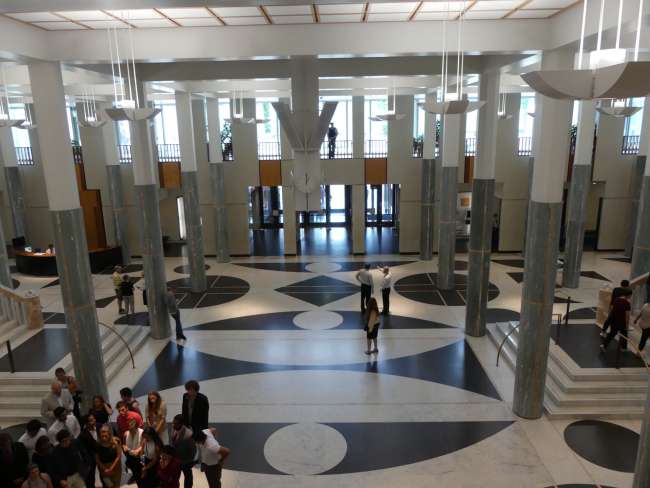
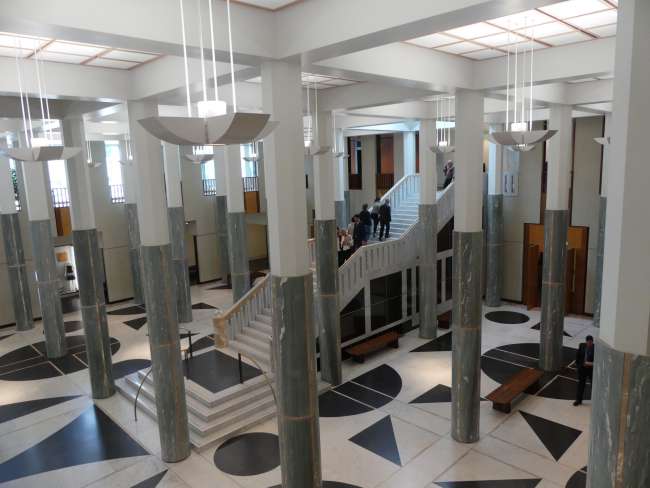
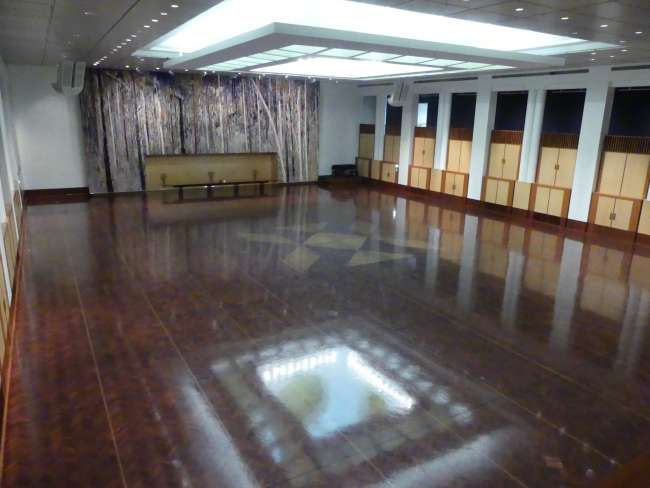
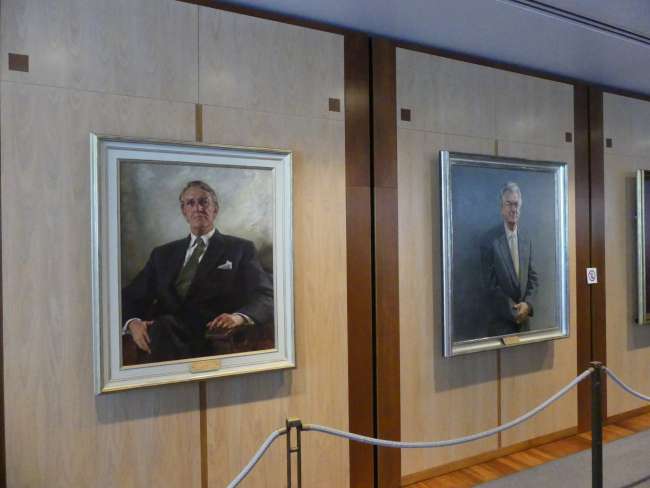
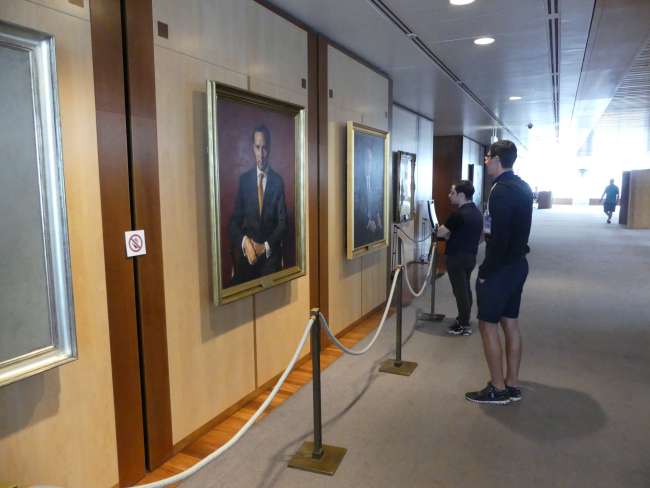
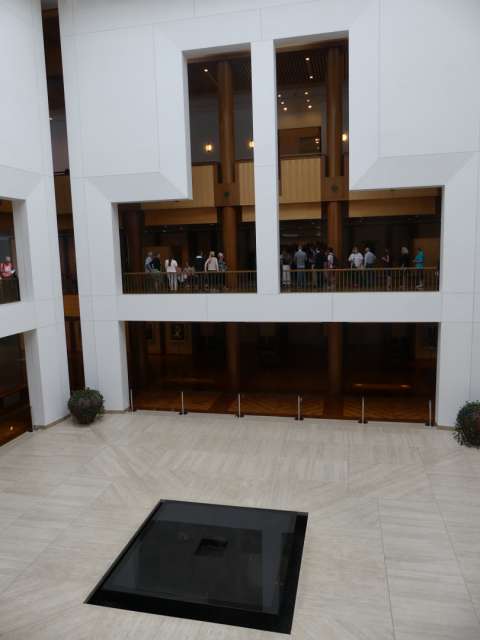
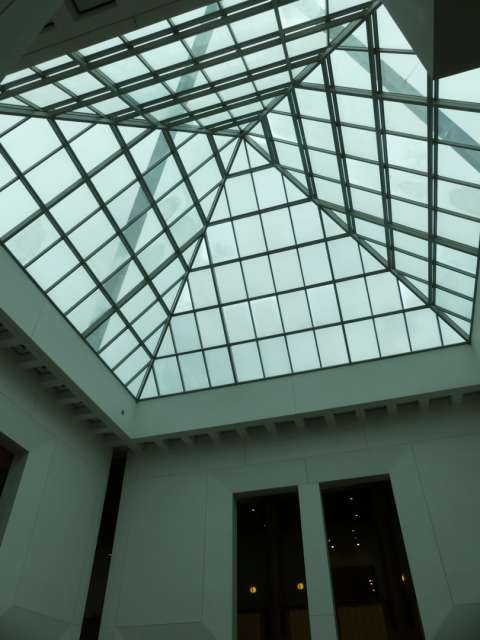
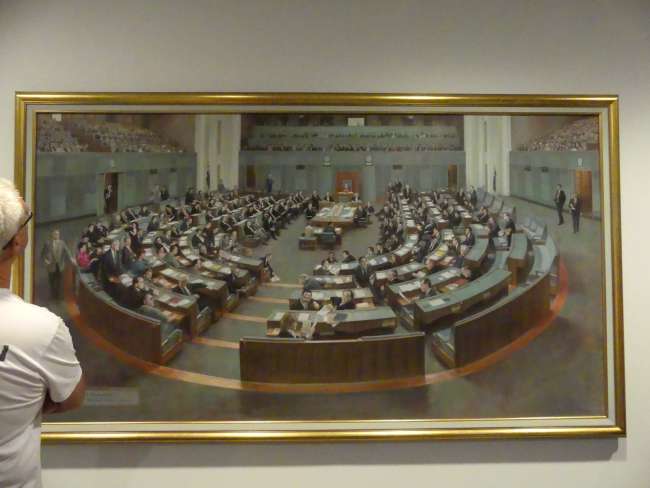
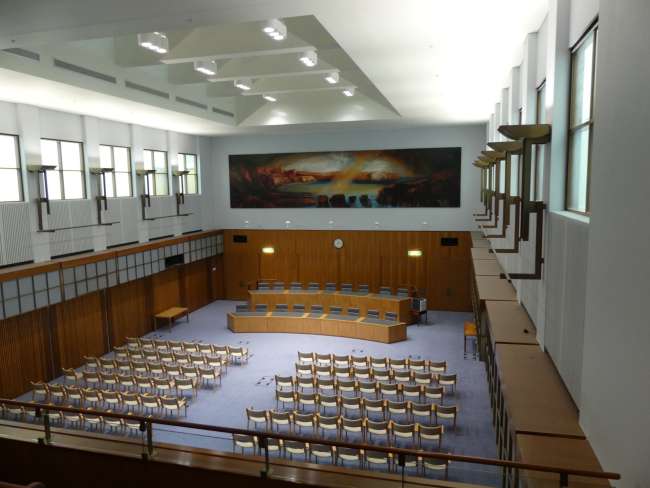
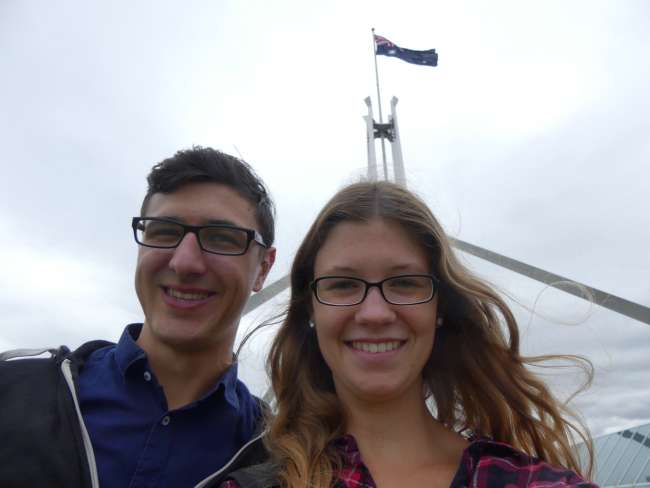
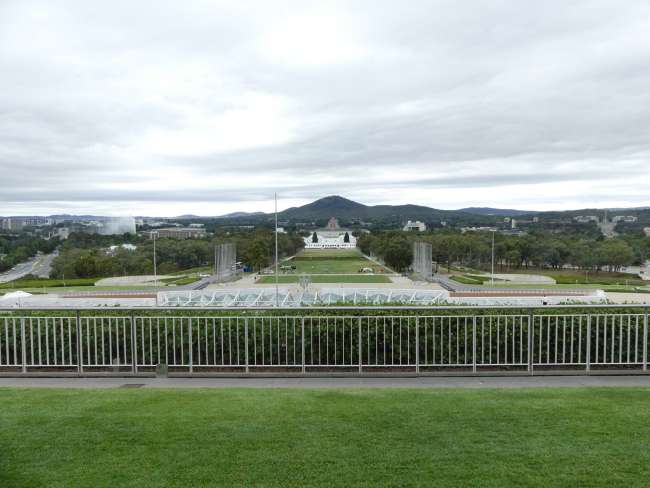
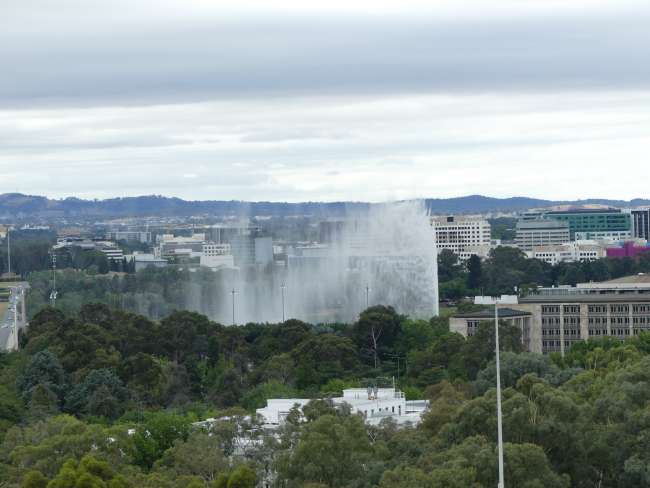
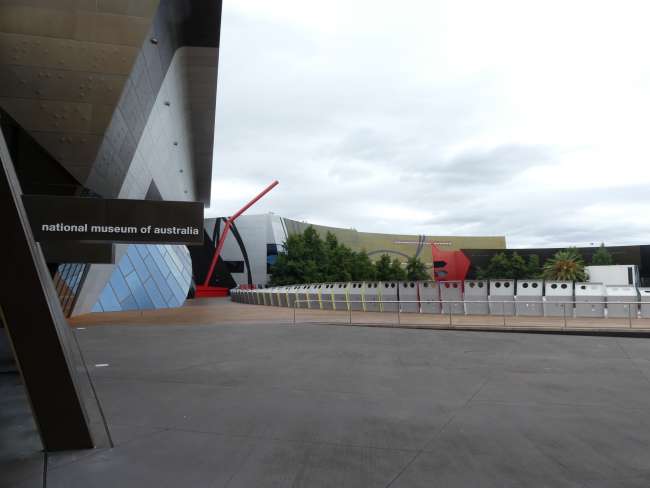
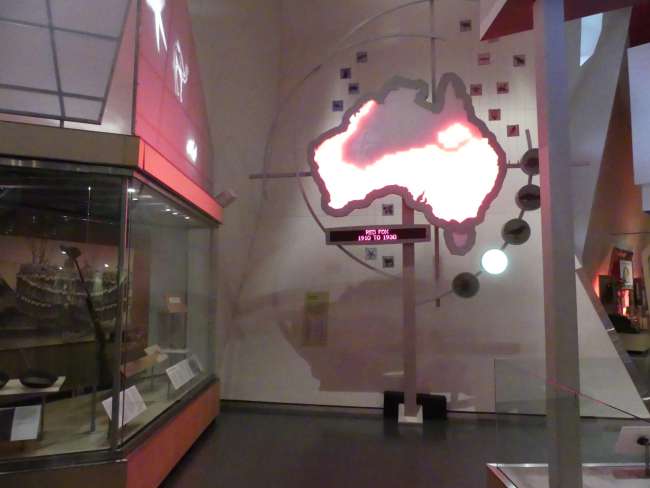
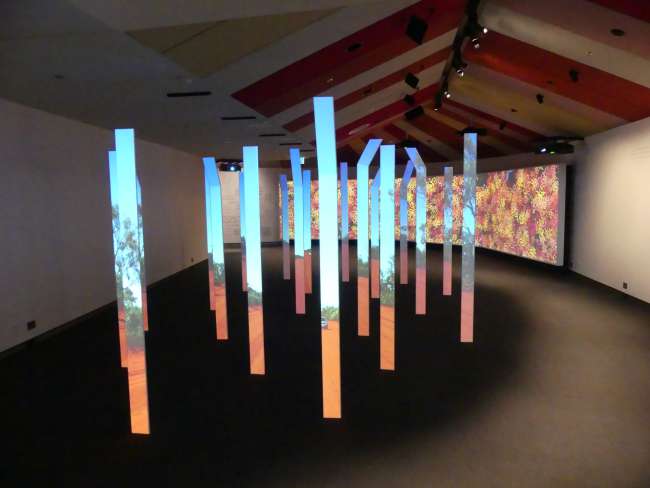
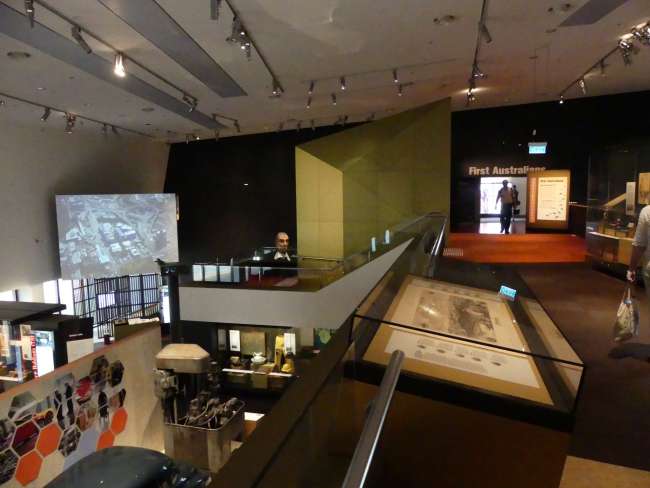
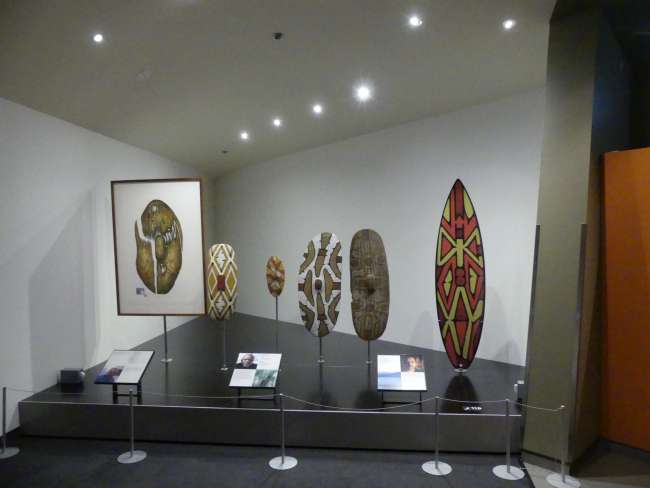
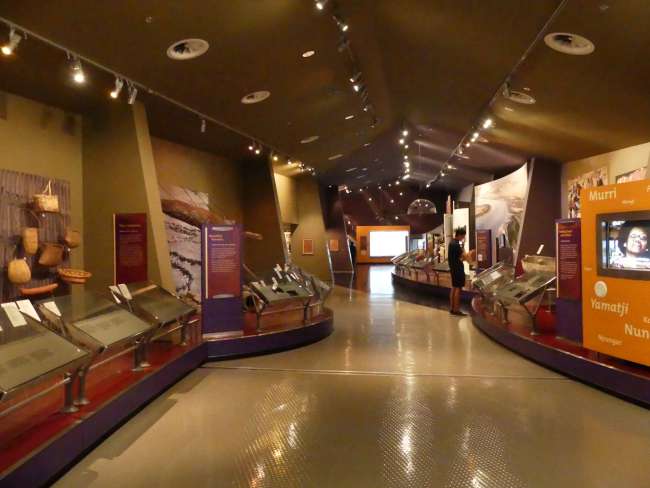
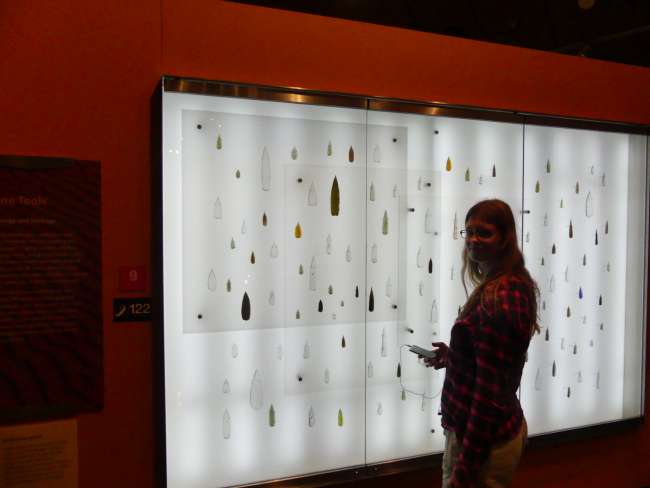
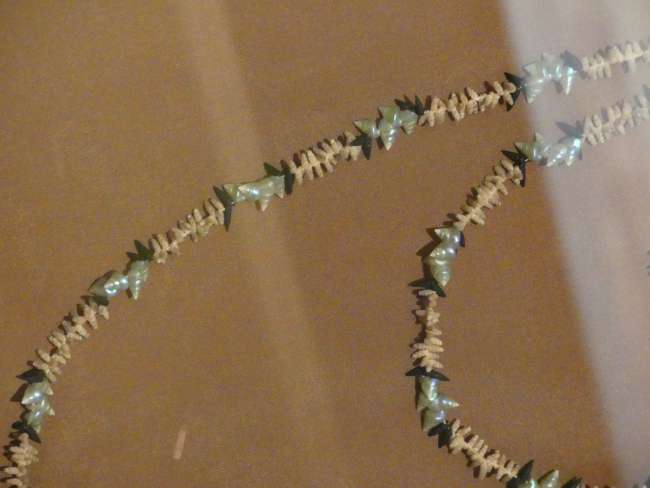
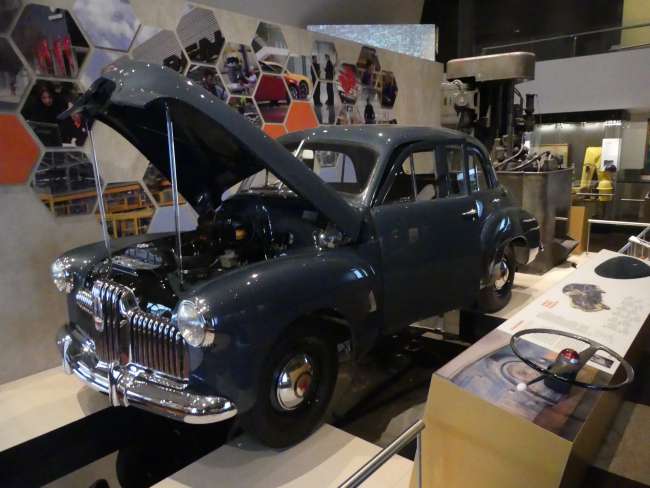
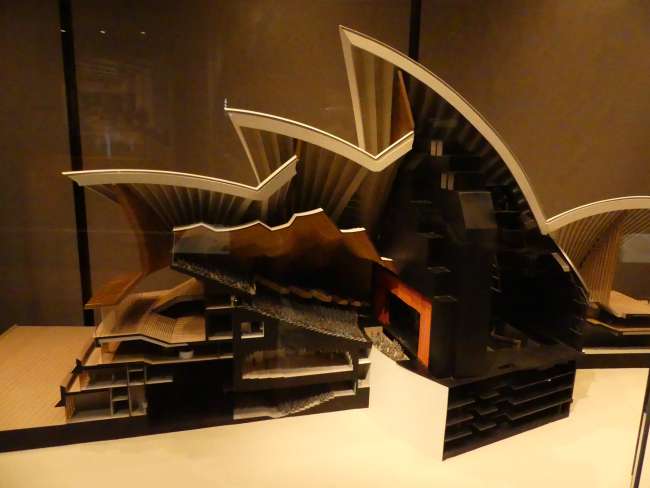
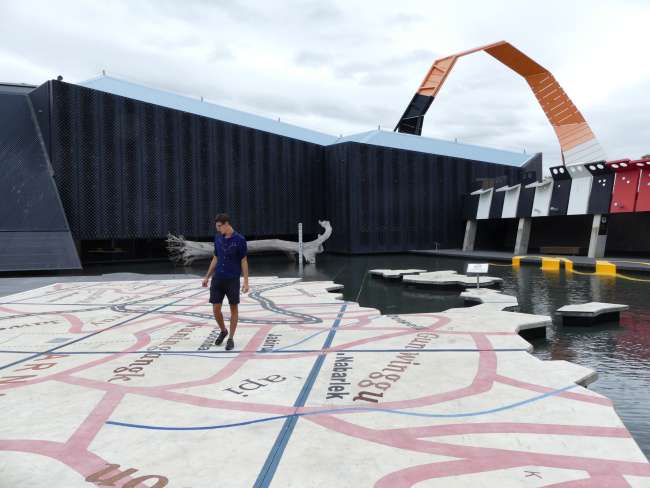
Kyerɛw wo din wɔ Newsletter no mu
Although some people told us that Canberra, the capital of Australia, is quite boring and you can't spend more than 2 days there at most, we wanted to see the city with our own eyes. So, we headed inland the day before and planned to do some sightseeing in the city today, on 07.02.
The day started as rainy as the last one ended, and after breakfast at our rest area a few kilometers outside the city, we drove into Canberra. We crossed another state border, as the capital is located in its own state, the Australian Capital Territory. However, it is quite small and includes only a few fields and mountains.
As always, we first visited the Visitor Information Centre, and a nice lady provided us with lots of information about the museums and events. From the terrace of the Info Centre, we could immediately admire the first landmark: the huge Captain Cook Memorial Jet fountain in Lake Burley Griffin. I'm not sure how tall it was, but I've never seen such a big fountain before!
After that, we visited the exhibition about the foundation of Canberra, as it was housed in the same building as the Visitor Centre. The region where the city stands today used to be Aboriginal land, and there was nothing but real Australian bush. However, the place was already called Canberra, which means "meeting place". Since the conflict over the determination of a capital after the country's independence could not be resolved, as Melbourne did not want Sydney to become the capital and vice versa, it was simply decided to build a completely new city somewhere between the other two cities. Somehow a crazy idea, but on the other hand, it was also logical, as the new city could be perfectly tailored to the needs of a capital. The architectural competition for the capital of Australia was won by the American Walter Burley Griffin with his design for a garden city that was to become the most beautiful capital in the world. All areas were generously laid out, and an artificial lake was dammed up. Construction work began in 1913, and in 1927 Canberra was officially declared the capital. At that time, however, there was still a temporary Parliament House, which was not replaced by the current Parliament House until 1988. From above, the whole city consists of circles and axes in different directions, forming, for example, the "Parliamentary Triangle", where all important political institutions are located. One corner of the triangle is the Parliament House on Capital Hill, another is the Defence Headquarters, and the third is the City Hill, representing the population. An important axis is the "land axis", which connects Mount Ainslie with Capital Hill in a straight line and continues to the highest mountain in the Australian Capital Territory. Canberra is located between many hills, and a plus point of Griffin's city design was that he integrated the hills into his design.
I found the whole thing very fascinating, and I am impressed that a city can be planned like this. We have heard voices saying that either you find Canberra beautiful or ugly, but I don't think it always has to be so black and white. From above, the city looks beautiful, but what annoyed me a bit is the fact that everything is so spread out, and as a pedestrian, you are practically lost. The public transport system is also not particularly well developed, and even with the car, we got lost several times during the day despite Google Maps. Somehow, in my opinion, something went wrong with the planning.
After the exhibition, we had lunch in the car and then drove to the Parliament House. There was a free tour, and of course, we joined in eagerly. I actually found the interior of the Parliament House quite beautiful, and I really liked the architecture and the furnishings with lots of art. However, from the outside, I found the building quite unusual because it was partly underground, as the architect did not want a single house to dominate the hill above the city. He succeeded in this intention, but I think the shape of the complex suffered as a result, and I don't like the huge flagpole either.
In the interiors, we first visited a large hall, which can also be rented privately and where the second-largest tapestry in the world hangs. It was completed in 3 years by 13 weavers working full-time, which is pretty impressive. Then our guide showed us the wall on which former ministers have immortalized themselves in portraits, with the artists being able to choose them. I think it's a nice tradition. Soon after, the tour ended, and we went on our own to the rooms of the Senate and the House of Representatives. On weekends, these parts of the building are also included in the tour, but today was a regular workday, and the politicians were therefore debating. However, as quiet spectators, we were still able to enter the rooms and watch the proceedings. By the way, the whole political system reminded me a lot of the one in New Zealand because we had already been to the Parliament House in Wellington. But here everything was a bit bigger, and more people were involved.
We found the debate in the Senate quite interesting, as it was about oil drilling, even if we didn't always understand everything. In the House of Representatives, it wasn't so exciting, so we went up to the roof, where there was a great view of the city. Now we had to hurry and go down to the underground car park because our 2 hours of free parking were about to end. Unfortunately, we had some bad luck and inserted the parking ticket into the machine at 2 hours and 2 minutes. Meaning: paying $3 for 2 minutes. So annoying!
After the Parliament House, we went to the National Museum of Australia and looked around there a bit. There were some cool things, like the outdoor area, where the entire floor consisted of an abstracted map of Australia. Or an old car of the Australian brand Holden. Unfortunately, we didn't have much time for the museum overall, so we could only briefly look at most of the exhibits.
After the museum closed for the day, we looked for a campsite. We immediately dismissed the first one because for $28 a night, it didn't have a kitchen (only BBQ stations) or a dryer. We then took the second one, even though it also didn't have a kitchen for $29. But there was a dryer for $3, and that was more important to us than a kitchen, as we could cook with our gas stove and there was still a sink for washing up.
As soon as we arrived at the campsite, we threw our laundry into the washing machine and went shopping. Then I put the laundry in the dryer, and we prepared dinner. Today we had a snack and instant noodles. However, during the preparations, we were disturbed by our Australian camp neighbors, who apparently like to talk. Well, actually, only one person was talking: Peter. He and another guy stood around and told us all sorts of things and asked us questions. Eventually, Peter disappeared, but the other guy was still there, even though there was no longer a conversation going on and we had actually already said goodbye. Very strange guy. Somehow we managed to brush him off and finally have dinner in the car. It was really cold, and we didn't want to stand outside anymore. Suddenly I remembered that we hadn't taken the laundry out of the dryer yet and ran off. Unfortunately, it was already 8:45, and the laundry closed at 8:30, the door was locked. Well, the laundry will have to spend the night in the dryer!
After we had converted our bed, we finally went to sleep. After the long day, we were really exhausted, and tomorrow we wanted to continue sightseeing!
Kyerɛw wo din wɔ Newsletter no mu
Anoyie (1)
Frank
Wäsche übernachtet im Trockner :-):-)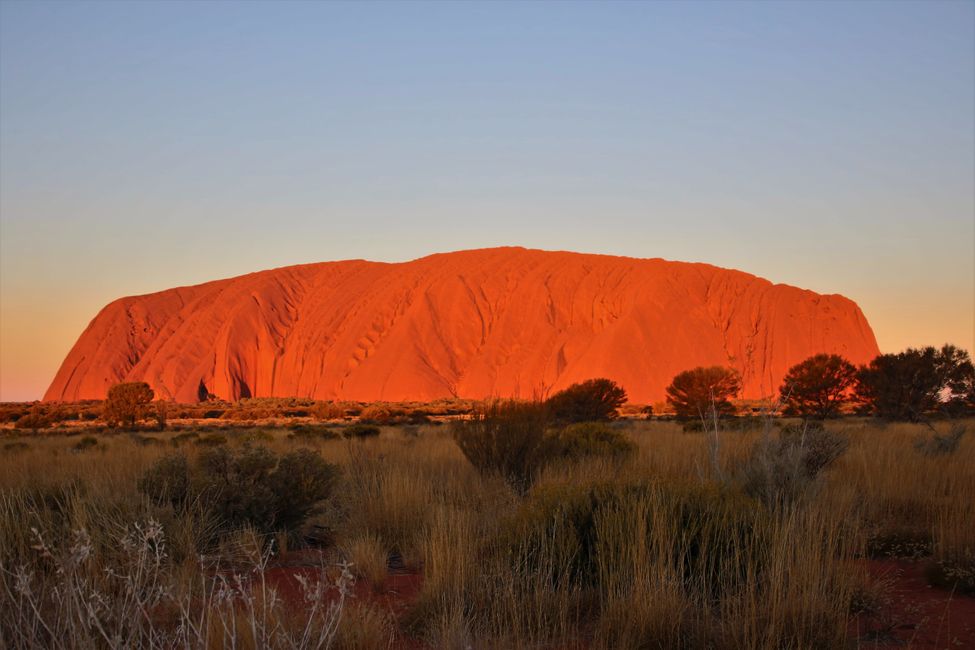
Akwantuo ho amanneɛbɔ Australia
